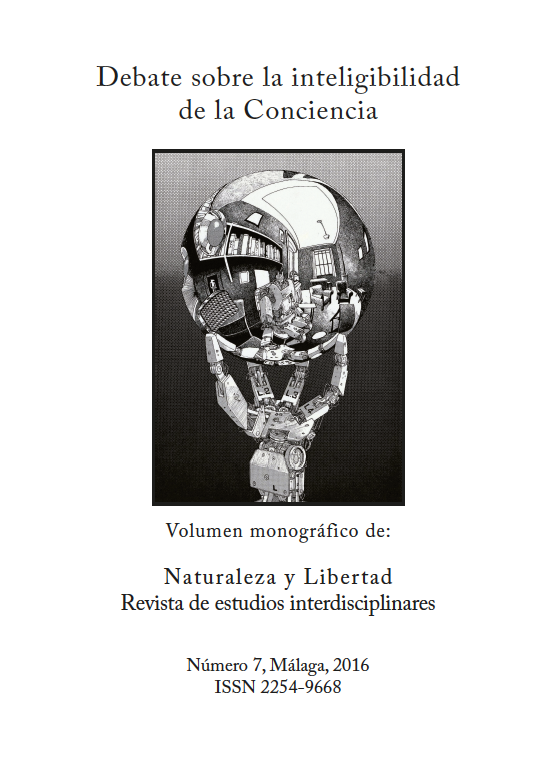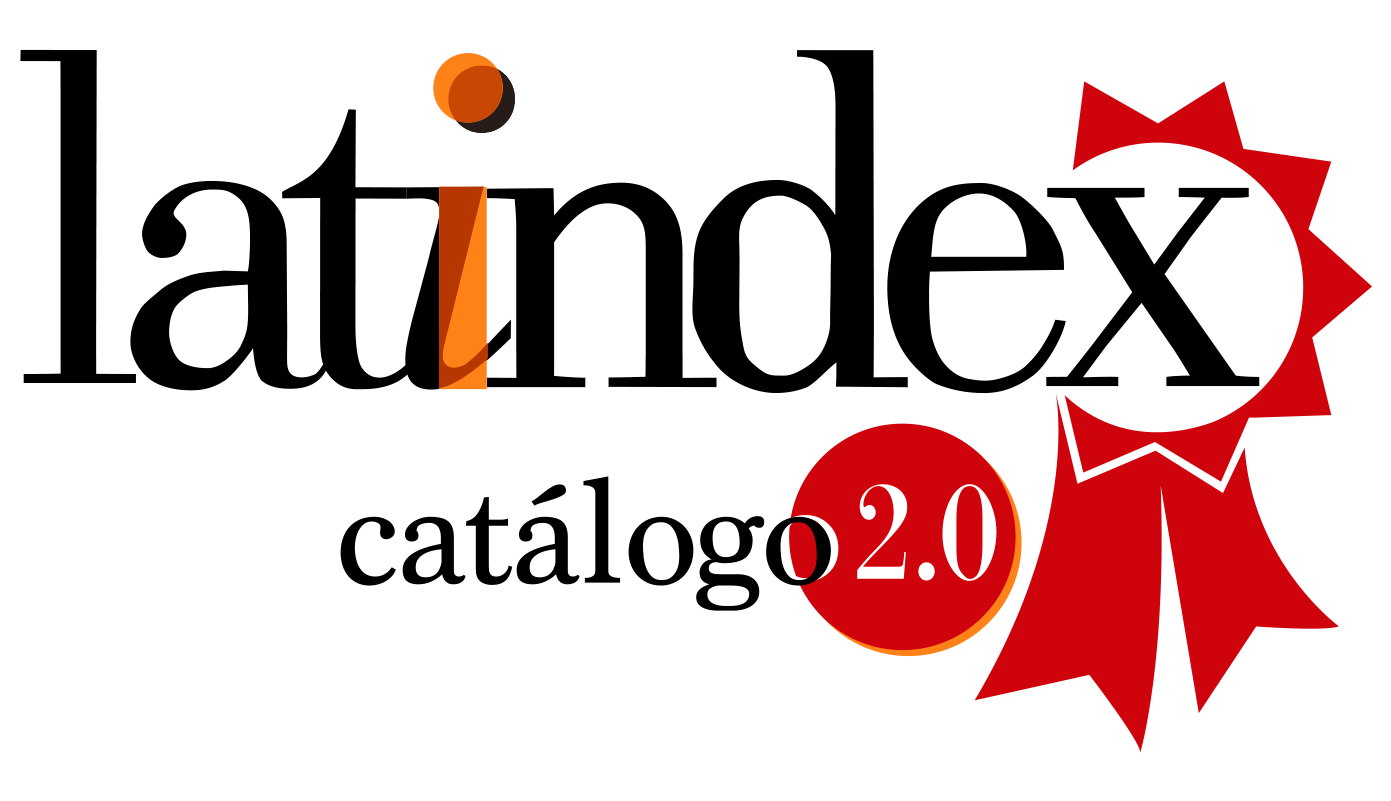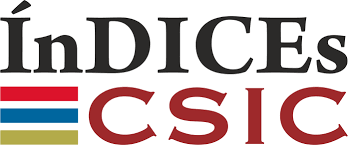Conciencia en e-prime. La (di)solución del problema mente-cerebro
DOI:
https://doi.org/10.24310/NATyLIB.2016.v0i7.6339Palabras clave:
E-prime, semántica general, neuroinmunología, conciencia, problema mente/cerebro, Leibniz, DescartesResumen
Este escrito, el primero en E-prime de la historia de la filosofía española, repasa las recientes aportaciones de la neuroinmunología al problema mente/cerebro, llegando a la conclusión de que los presupuestos bajo los cuales se ha realizado la discusión de tal problema ya no pueden seguir manteniéndose. Como consecuencia, se sugiere la necesidad de partir de una nueva conceptualización de en qué pueda consistir la conciencia y los fenómenos mentales, centrada en los rasgos topológicos del sistema neuroendocrinoinmunológico y no en la materialidad de ciertas redes cerebrales.Descargas
Métricas
Citas
R. Ader, y N. Cohen, “Behaviorally conditioned immunosuppression”, Psychosomatic Medicine, 37 (1975), 333-340.
H. Besedovsky, E. Sorkin, M. Keller, y J. Miller, “Hypothalamic changes during the immune response”, en European Journal of Immunology, 7 (1977), 323-325.
D. D. Bourland, Jr . “A Linguistic Note : Writing in E-Prime” en General Semantics Bulletin, 32-33 (1965/6), 111-14.
A. Brynskikh, T. Warren, J. Zhu y J. Kipnis, J. “Adaptative immunity affects learning behavior in mice”, en Brain Behavioral Immunity, 22 (2008), 861-9.
D. L. Felten, S. Y. Felten, D. L. Bellinger, S. L. Carlson, K. D. Ackerman, K. S. Madden, J. A. Olschowka y S. Livnat, “Noradrenergic sympathetic neural interactions with the
immune system: Structure and function”, en Immunological Review, 100 (1987), 225-260.
Feuerbach, L. Vorläufige Thesen zur Reform der Philosophie, 1843, en Kleine philosophische Schriften (1842-5), hrsg. von M. G. Lange, Felix Meiner, Leipzig, 1950.
F. H. Gage e Y. Christen (Eds.), Retrotransposition, Diversity and the Brain, Springer Verlag, New York, 2008.
Y. Ikemi, y S. A. Nakagawa “A psychosomatic study of contagious dermatitis”, en Kyushu Journal of Medical Science, 13 (1962), 335-50.
A. Korzybski, Science and Sanity. An Introduction to non-aristotelian systems and general semantic, original de 1933, 5ª ed., Institute of General Semantic, New York, 1994.
J. Kipnis, H. Cohen, M. Caudon, Y. Ziv, y M. T. Schwartz,”T cell deficiency leades to cognitive disfuntion: implications for therapeutic vaccination for schizophrenia and other
psychiatric conditions”, en Proceedings of the National Academy of Science USA, 101 (2004), 8180-8185.
J. Kipnis, N. C. Derecki, G. Young, H. Scrable, “Immunity and cognition: what do agerelated dementia, HIV-dementia and “chemo-brain” have in common?”, en Trends of Immunology, 29 (2008), 10, 455-65.
Leibniz a Arnauld, 30 de abril de 1687, en Sämtliche Schriften und Briefe von Gottfried Wilhelm Leibniz, herausgegeben von der Preussischen (ahora Deutschen) Akademie der Wissenschaften zu Berlin, 1923 y ss. Serie II, vol. 2, B.
S. Metal'nikov, y V Chorine, “Role des reflexes conditionnels dans l'immunité”, en Annales de l'Institute Pasteur, 40 (1926), 893-900.
A. R. Muotri, M. C. Marchetto, N. G. Coufal, y F. H. Gage, “The necessary junk: new functions for transposable elements”, en Human Molecular Genetics, 16 (2007) 2, 159-167.
Ch. Nash, “Topology and Physics - a Historical Essay”, en I. M. James (Ed.) History of Topology, North-Holland, Amsterdam, 1999.
S. R. Pandi-Perumal, D. P. Cardinali, y G. P. Chrousos (Eds.) Neuroimmunology of Sleep, Springer, New York, 2007.
N. Ron-Harel, Y. Segev, G. M. Lewitus, M. Cardon, Y. Ziv, D. Netanely, J. JacobHirsch, N. Amariglio, G. Rechavi, E. Domany y M. Schwartz, “Age-dependent spatial memory loss can be partially restored by immune activation”, en Rejuvenation Research, 11
(2008), 903-13.
C. Serre-Miranda, S. Roque, N. Correia Santos, C. Portugal-Nunes, P. Costa, J. Almeida Palha, N. Sousa y M. Correia-Neves, “Effector memory CD4+ T cells are associated with performance in a senior population”, en Neurology: Neuroimmunology & Neuroinflamation,
, 2 (1), e 54, PCM Web, 22 mayo 2016.
J. Vázquez Moctezuma, J. A. Rojas Zamorano, E. Esqueda León, A. Quintanar Stephano y A. Jiménez Anguiano, “Selective REM Sleep Deprivation and Its Impact on the Immune Response”, (Pandi-Perumal et al. 2007).
D. A. Weigent and J. E. Blalock, “Bidirectional Communication Between the Brain and the Immune System” (Pandi-Perumal et al. 2007).
R. Whitaker, Anatomy of an Epidemic. Magic Bullet, Psychiatric Drugs, and the Astonishing Rise of Mental Illness in America, Crown Publishers, New York, 2010.
J. M. Williams, R. G. Peterson, P. A. Shea, J. R. Schmedtje, D. C. Bauer, y D. L. Felten, “Sympathetic innervation of murine thymus and spleen: Evidence for a functional link between the nervous and immune system” en Brain Research Bulletin, 6 (1981), 83.
Descargas
Publicado
Cómo citar
Número
Sección
Licencia
Aquellos autores/as que tengan publicaciones con esta revista, aceptan los términos siguientes:
1. La información de derechos de autor y licencias se describe claramente en el sitio web de la revista: todo el contenido publicado en Naturaleza y Libertad es de acceso abierto sin límite y está sujeto a la licencia Attribution-NonCommercial-ShareAlike 4.0 International (CC BY-NC-SA 4.0). El texto completo se puede consultar en https://creativecommons.org/licenses/by-nc-sa/4.0/
2. Es responsabilidad de los autores obtener los permisos necesarios para las imágenes que están sujetas a derechos de autor. Los autores cuyas contribuciones sean aceptadas para su publicación en esta revista conservarán el derecho no exclusivo de utilizar sus contribuciones con fines académicos, de investigación y educativos, incluido el autoarchivo o el depósito en repositorios de acceso abierto de cualquier tipo. La edición electrónica de esta revista está editada por la Editorial de la Universidad de Málaga (Uma Editorial), siendo necesario citar el origen en cualquier reproducción parcial o total.
3. Esta revista permite e incentiva a los autores a publicar artículos en sus sitios web personales o en repositorios institucionales, tanto antes como después de su publicación en esta revista, siempre que proporcionen información bibliográfica que acredite, en su caso, su publicación en la misma.
4. En ningún caso se publicarán artículos anónimos.





18.png)













